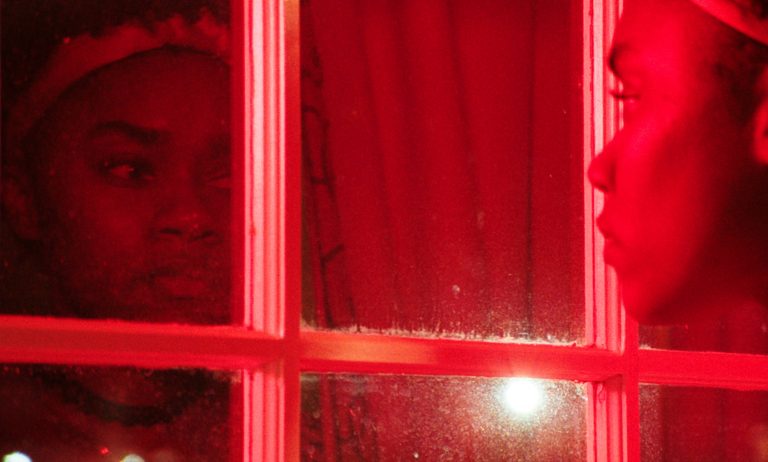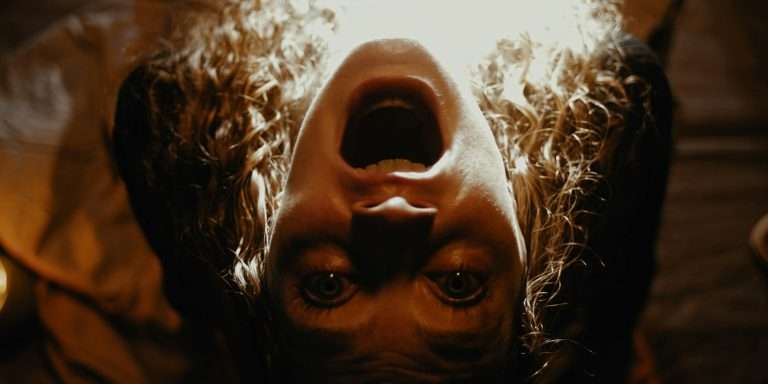To call out “Kalki 2898 AD,” as it is inspired by so many ingredients like “Dune,” “Star Wars,” “Alita Battle Angel,” and even “Mad Max” to a certain extent, would be punching low, taking the lowest hanging fruit and throwing it away without tasting to see whether that fruit has nectar. Because even if director Nag Ashwin takes ideas and inspiration from all those recognizable franchises and intellectual properties, he also takes inspiration from Indian mythology, especially the Mahabharata.
He takes the events of the Mahabharata as the central text, even serving as the history within this dystopian universe. Nag Ashwin connects those two timelines delineated by a period of six thousand years with the character of Ashwatthama (Amitabh Bachchan) and utilizes the aesthetic of the production design while extrapolating what the dystopian future of 2898 AD would entail visually.
A subtle hint had been given in the two-episode children’s series titled “Bujji & Bhairava,” also directed by Nag Ashwin and serving as part of the Kalki Cinematic Universe. At no point did that show become necessary to watch, but it did make me curious amidst rudimentary animation. The city of Kashi, which is the only city currently standing, is home to a massive inverted pyramid-shaped castle called the Complex. The currency of this city is termed units, and bounty hunters are given missions to collect such units.

Prabhas’ character of Bhairava is one such bounty hunter, and he dreams, like all of the bounty hunters and ambitious folks of Kashi, to one day enter the gates of The Complex and enjoy the fruits of labor offered by The Great Yashkin (Kamal Haasan). Yashkin is an unseen god, never seen and only heard of in whispers, but he is represented by his mouthpiece, Manas (a properly slimy Saswata Chatterjee). But Bhairava’s dreams come true when a pregnant woman escapes from the breeding center of The Complex, and he will have to hunt her down while also having to contend with a group of rebels who believe that this woman is the literal harbinger of the chosen one, or Kalki, who signifies the beginning of a new age, along with a still alive, albeit older, and yet gigantic Ashwathama.
As an exercise in world-building, Ashwin truly excels in “Kalki 2898 AD.” Easily the strongest element of the film, it also contributes to a mostly slower yet developing first half. In depicting the interiors of the complex as well as the rudimentary concepts of class divide, he uses Bhairava as the audience surrogate, and that is where he falters.
Bhairava’s character is afforded a goofy behavioral tic, which doesn’t fit comfortably on the shoulders of Prabhas, whose limitations only exacerbate when he is given rein to flex those comedic bits, as well as be the star that the posters and even the budgeting of this project had been designed based on. Thus, there is a minor love angle with Disha Patani’s Roxy that doesn’t work in a vacuum, nor do the comedic bits of Brahmanadam. However, as sprinkles of world-building and in the premise of giving that character a semblance of personality, the intention is pretty clear.
Thankfully, “Kalki 2898 AD” is very much an ensemble piece, even though the fans of “Rebel Star Prabhas” and the marketing would try to show otherwise. Amitabh Bachchan’s Ashwatthama gets a lot of real estate, and even though he is literally and figuratively enhanced by VFX, Bachchan’s screen presence brings forth a natural form of intimidation and gravitas to the wizened warrior of myth and legend. Deepika Padukone, as one of the women forced to breed for the ruthless ruler of this world and carrying the “messiah” in her womb, is a product of the plot, playing the roles of the damsel-in-distress and the MacGuffin all in one, and she brings a lot more presence than the script affords her.
Saswata Chatterjee is a veteran actor who has to play the part of the power-hungry and slimy mouthpiece cum overlord of the Complex, and he brings a menace to the role while also allowing for moments of dark comedy. This is a movie determined not to wallow itself in self-seriousness throughout, and that I appreciated. Kamal Hassan’s cameo as lord Yashkin (or an anorexic Baron Harkonnen) is an interesting one, intriguing enough for me to see where it goes. The other notable cameos, though, are hilarious, some for their sheer novelty and some due to the choices of the actors in those characters.

But truly, what makes this movie work wonders is the interval block and the beginning of the second half. From that point on, we are watching a chase sequence in the ruins-filled desert landscape, and in the final twenty minutes, a confrontation between the establishment and the rebels. Its final twenty minutes, how the action scenes are designed and how the special effects are utilized while also managing to hide their overuse such that the uncanny valley doesn’t become too distracting are where “Kalki 2898 AD” truly becomes a product of ambition and execution working in synchronicity. It is downright impressive—a moment where director Nag Ashwin truly steps up to the big leagues and manages to swing for the fences, and for the most part, those swings connect. I wish the Santhosh Narayanan music had been as consistently epic and brought a larger character to the film.
Indian movies heavily utilize VFX and special effects to depict large-scale fantasy-heavy storytelling. Their failure, for the most part, is due to the shoddy quality of those effects and their overuse. And while the special effects with the CGI are overused here as well, it’s the quality of those effects that make the difference. This is also a movie where the familiar elements of any commercial star vehicle threaten to bog this film, but the story allowing for multiple characters to take center stage allows for the deficiencies of the lead to be masked simply because he isn’t an overwhelming presence.
Thus, when Bhairava finally gets a climactic moment in the final sequences, the high elicited from the dopamine rush doesn’t feel like an unnecessary add-on. It feels like part of a series of successive highs produced as a result of a satisfactory climax, with its colors and its verve. Of course, it teases a continuation, and honestly, I am intrigued to see where the film goes next, hopefully rectifying some of the flaws in the screenplay.





![Bestseller [2022] Prime Video Review: A Strong Front Runner For One Of The Worst Shows Of The Year](https://79468c92.delivery.rocketcdn.me/wp-content/uploads/2022/02/Bestseller-2022-Show-768x403.jpeg)




